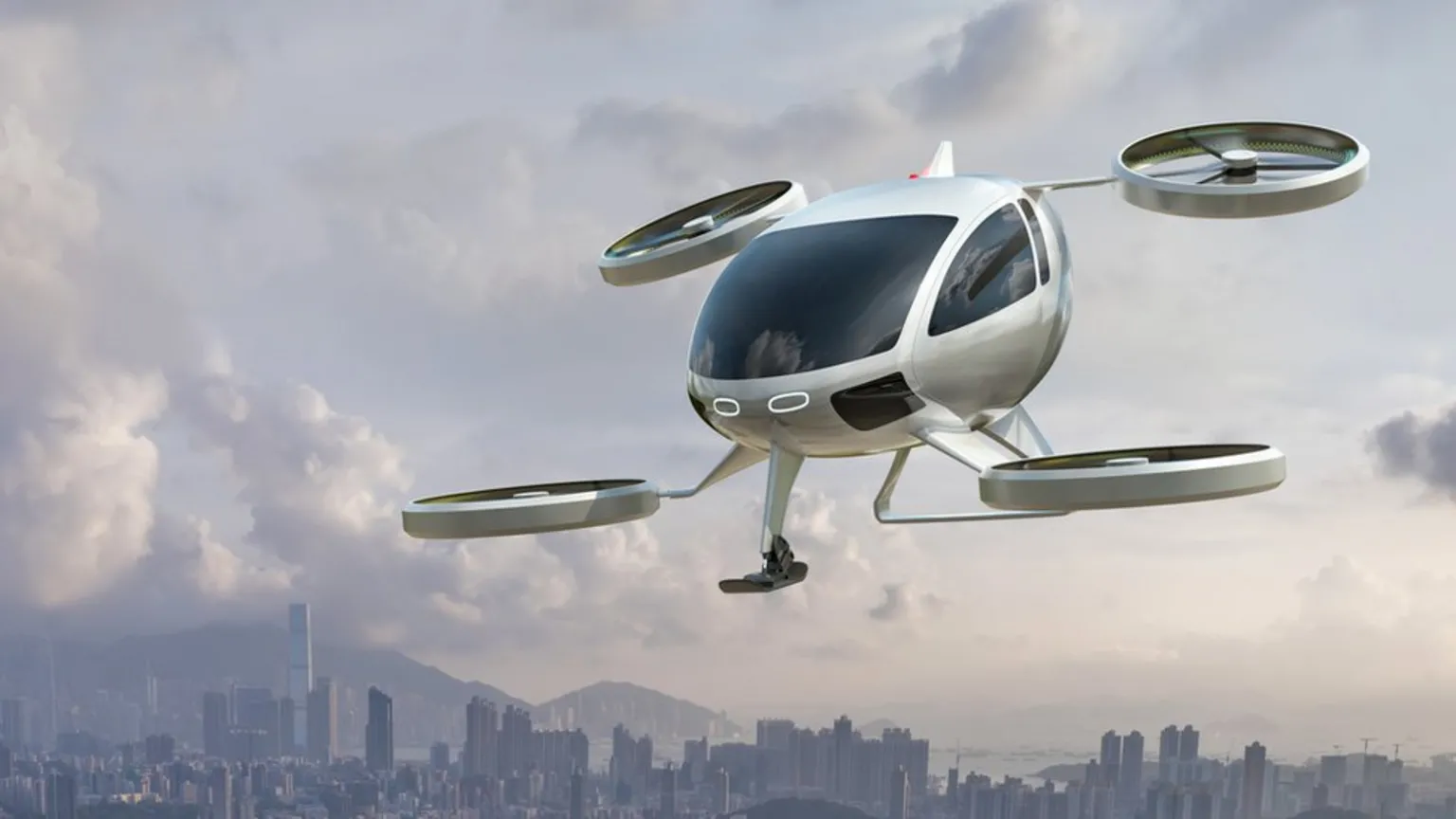For thousands of years, the human imagination has been fascinated by the idea of flying freely like birds. From the myth of Icarus soaring on wings of wax to Leonardo da Vinci’s sketches of fantastical flying machines, we have dreamed of a future where cities are not confined to roads but spread into the skies. Today, that dream is no longer confined to mythology or science fiction—it is on the verge of becoming reality. Flying taxis, once a futuristic fantasy, are rapidly emerging as the next great revolution in urban transportation.
When we imagine stepping out of a building, walking to a rooftop platform, and boarding a sleek, silent electric aircraft that lifts us above traffic jams and carries us swiftly across the city, we are not imagining a distant utopia. We are imagining a future that is already being tested. Urban air mobility, as experts call it, promises to transform the way we live, work, and move within our cities. It is not only about technology; it is about reshaping the human experience of space, time, and freedom.
The Origins of the Dream
The idea of personal flight is not new. In the early 20th century, when the Wright brothers first achieved powered flight, the world was stunned. But almost immediately, people began speculating that airplanes would someday be as common as cars. By the mid-1900s, popular magazines and futurists predicted that families would commute in flying cars by the year 2000. Movies and science fiction stories—from The Jetsons to Blade Runner—fed the public imagination with images of aerial highways and floating vehicles buzzing between skyscrapers.
Reality, however, proved far more complex. Airplanes were too large, helicopters were too noisy and dangerous for mass urban use, and the infrastructure to manage millions of flying vehicles did not exist. For decades, the flying car remained a symbol of a future that never arrived.
But technology evolves in waves, and each wave brings us closer to old dreams. The rise of drones, electric propulsion, lightweight batteries, and artificial intelligence has rekindled the possibility of flying taxis. What seemed impossible in the 20th century is becoming achievable in the 21st.
The Technology Behind Flying Taxis
Flying taxis, or more formally eVTOLs (electric Vertical Take-Off and Landing vehicles), are aircraft designed specifically for urban transportation. Unlike airplanes, they do not need runways. Unlike helicopters, they are quieter, safer, and cheaper to operate.
At the heart of this revolution is electric propulsion. Traditional helicopters rely on large, spinning rotors and fuel-burning engines that are noisy, expensive, and environmentally harmful. eVTOLs use multiple small rotors powered by batteries or hybrid systems. This allows vertical lift with greater stability, lower noise levels, and fewer mechanical failures.
Battery technology is another enabler. Advances in lithium-ion and solid-state batteries now make it possible to store enough energy for short urban flights. Though not yet capable of long-haul journeys, these batteries are well-suited for hops of 20 to 50 kilometers, which cover most city commutes.
Artificial intelligence and automation are equally critical. Unlike conventional aviation, urban skies will not be managed by human pilots alone. Flying taxis will rely on advanced software to navigate, avoid collisions, and integrate seamlessly with air traffic control. Some designs envision fully autonomous flight, removing the need for human pilots altogether and reducing costs dramatically.
The Promise of Urban Air Mobility
Imagine the city of the future where traffic jams no longer trap people in endless queues of honking cars. Instead, travelers rise above the streets, carried across town in minutes by quiet, electric aircraft. Commutes that once took an hour by car could take ten minutes by air. Emergency services could reach patients faster, goods could be delivered more efficiently, and people could connect with opportunities across the city like never before.
The benefits extend beyond convenience. Urban air mobility has the potential to reduce road congestion, cut down on emissions when paired with renewable energy, and create new economic ecosystems around aerial infrastructure. Skyports, vertiports, and landing pads atop buildings could become as common as parking lots. The urban landscape would transform vertically, with architecture adapting to support airborne transportation.
Challenges on the Horizon
Yet, the journey to widespread flying taxis is not without obstacles. The challenges are technological, regulatory, economic, and cultural.
One of the biggest barriers is battery efficiency. Current battery technologies still limit flight time and range. While short hops are feasible, longer flights or heavy payloads require either breakthroughs in energy density or hybrid power solutions. Safety is another concern. Any failure in an urban flying taxi could have catastrophic consequences, and public trust will depend on flawless reliability.
Noise pollution, though reduced compared to helicopters, remains an issue. Cities will not accept constant buzzing above their rooftops without strict noise regulations. Air traffic management also presents enormous complexity. Coordinating thousands of autonomous aerial vehicles in dense urban areas requires new systems that go beyond today’s aviation protocols.
Economically, flying taxis must overcome the perception of being a luxury for the wealthy. Early services may indeed be expensive, but for urban air mobility to fulfill its promise, costs must drop to a level comparable with ride-hailing services. Infrastructure investment will also be massive, requiring cooperation between governments, businesses, and city planners.
Finally, cultural acceptance cannot be underestimated. People must feel safe, comfortable, and willing to board an aircraft that operates above crowded streets. Just as automobiles once required decades of adaptation, flying taxis will need time before they are embraced as ordinary transportation.
The Global Race for the Skies
Despite these challenges, the race to develop flying taxis is accelerating. Dozens of companies across the globe are building prototypes and testing flight systems. Giants like Airbus, Boeing, and Toyota are investing heavily, while startups like Joby Aviation, Lilium, Volocopter, and Archer Aviation are pushing the boundaries of design. Tech companies such as Uber (through its Uber Elevate initiative) envision entire networks of on-demand flying taxis integrated into ride-hailing apps.
Cities are preparing as well. Dubai has already conducted test flights of autonomous aerial taxis. Singapore, Los Angeles, and Paris are partnering with companies to build the first vertiports. The 2024 Paris Olympics were even considered as a stage for demonstrating flying taxis in real urban conditions.
This is not a distant dream. Many experts predict that commercial flying taxi services will begin within this decade, gradually expanding to become a mainstream form of transportation in the 2030s.
Redefining the City of Tomorrow
The rise of flying taxis will not simply add a new mode of transportation—it will redefine the very structure of cities. If travel by air becomes fast, affordable, and common, urban geography will expand. People may live farther from city centers yet still enjoy rapid commutes. High-rise buildings will be designed with landing pads on rooftops, reshaping skylines to accommodate aerial mobility.
Public transportation networks may evolve into three-dimensional systems where subways, roads, and skyways coexist. Urban planners will face new questions about zoning, noise corridors, and aerial traffic patterns. Cities could even develop new districts centered around vertiports, much as railways once gave birth to bustling station neighborhoods.
The psychological effect of reclaiming time is perhaps the most profound. Commuters who now lose hours each day to traffic could gain back precious time for work, family, or leisure. The emotional relief of escaping congestion could redefine urban living, reducing stress and improving quality of life.
Environmental Considerations
The environmental impact of flying taxis is a subject of intense debate. On one hand, electric propulsion offers a pathway to low-emission travel, particularly if powered by renewable energy. On the other hand, widespread air mobility could increase overall energy demand and encourage urban sprawl.
Noise, wildlife disruption, and airspace congestion also pose environmental challenges. Careful planning and strict regulation will be necessary to ensure that the skies remain safe, quiet, and sustainable. Done responsibly, flying taxis could complement green initiatives by reducing road traffic and integrating with clean energy systems.
Human Imagination and the Future of Flight
Perhaps the most extraordinary aspect of flying taxis is not the technology itself but what it represents for humanity. For centuries, the ability to rise above the earth symbolized freedom, transcendence, and power. The bird in flight, the dream of soaring, has always carried deep emotional meaning.
When flying taxis become part of everyday life, they will reshape not only cities but also human consciousness. Children growing up in such cities may see the sky not as something distant but as a familiar highway. The horizon of human possibility will stretch upward, and the imagination of new generations will be shaped by the belief that the skies are theirs to travel.
The Road—or Sky—ahead
Flying taxis will not arrive all at once. They will begin with pilot programs, niche routes, and luxury services. Over time, as technology matures and costs fall, they will integrate into the daily lives of millions. Much like the automobile transformed the 20th century, flying taxis have the potential to define the 21st.
The path forward will be filled with trials, setbacks, and debates. But history shows that human ingenuity rarely accepts limits for long. Where there is demand, creativity, and vision, solutions emerge.
The future of cities is not only vertical in architecture but in mobility. The day is approaching when we will look up at the sky and see not only birds and airplanes but fleets of sleek, electric taxis weaving between towers, carrying us swiftly, safely, and sustainably across our urban landscapes.
A Future Within Reach
In the end, flying taxis are more than machines. They are a testament to humanity’s refusal to remain grounded by limitations. They embody the blend of science, imagination, and courage that drives us forward.
The skies above our cities, once silent and untouchable, are about to open. They will change how we live, how we connect, and how we imagine the future. The dream of flight, carried through myths and stories for millennia, is about to take root in our daily lives.
When we finally step into that quiet, hovering craft and rise above the traffic, we will feel more than convenience—we will feel the ancient thrill of wings. And in that moment, cities themselves will be reborn, as humanity’s old dream of freedom in the skies becomes an ordinary reality.






